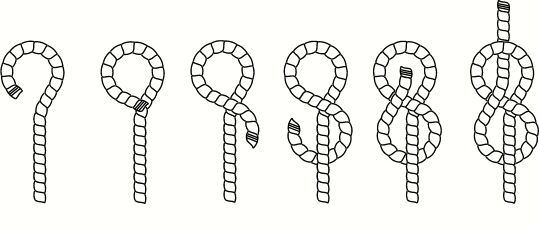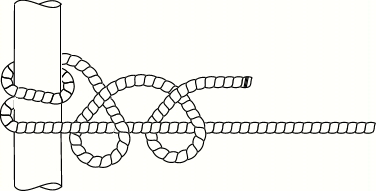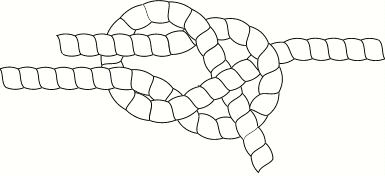

Sailing Knots
Bowline

| This sailor’s knot is easy, strong and secure. Its beauty lies in that the greater the load on it, the tighter it holds. Yet it is always easy to untie. These qualities make the bowline the first knot of choice and the first knot to learn. You can use the bowline to secure the jib sheets to the sail, make a lasso to slip over pilings, attach the dinghy painter to a ring or handle, and attach a line to an anchor, among many other uses. |
Clove Hitch

| The clove hitch is commonly used to tie your boat to a post or piling when docking. With a slipped end, the clove hitch is our favourite knot for tying boat fenders to the lifelines or tops of stanchions. You can simply pull the slipped end and the whole knot unties. |
Figure of Eight

| Probably the easiest of all knots to tie, you tie the stopper knot at the end of a jib sheet or halyard. It ensures that the line will not inadvertently feed back through your fairlead or block. Note: Never tie a stopper knot to spinnaker sheets since they may need to be released quickly to run through. |
Reef Knot

| The reef knot is a multi-purpose, flat, symmetrical knot that forms a square when tied. It is useful when reefing the mainsail. It’s easy to untie by pulling one end at a 90-degree angle. Do not mistake this knot for a granny, which does not stay secure. The reef knot should lie flat after tying. This knot is never used with lines of different sizes or unequal fibre properties because slippage can occur. |
Round Turn and Two Half Hitches

| This knot is often used as an alternative to the clove hitch. You can secure a line to a piling, ring, hook, or handle while supporting high loads. It is also used to secure a line to an anchor. |
Sheep Bend

| This is the most common knot for tying two lines of same or of different sizes. Like the bowline, the more pressure applied, the stronger the knot. If you can already tie a bowline, you can tie a sheet bend. You simply use two pieces of line instead of one. (Make sure that the lines are not too different or the knot loses its effectiveness.) |
Knots are an important part of sailing and your safety could depend on how you tie them, so please practise them. |